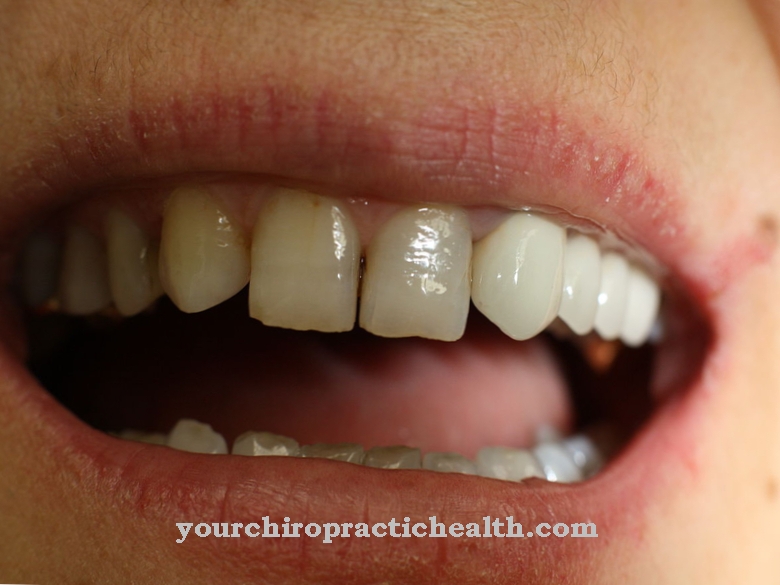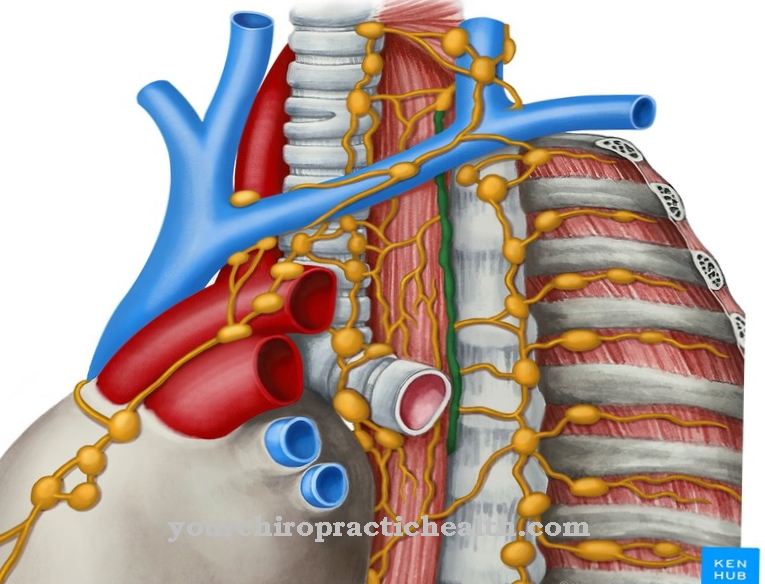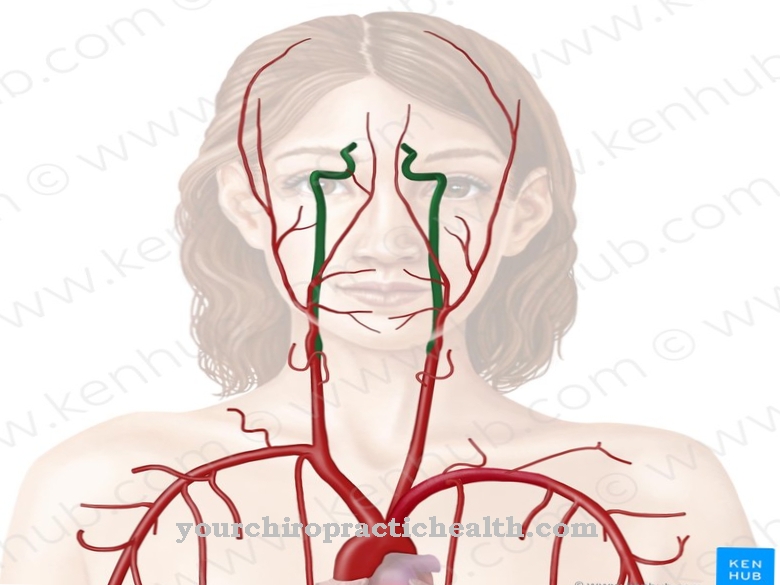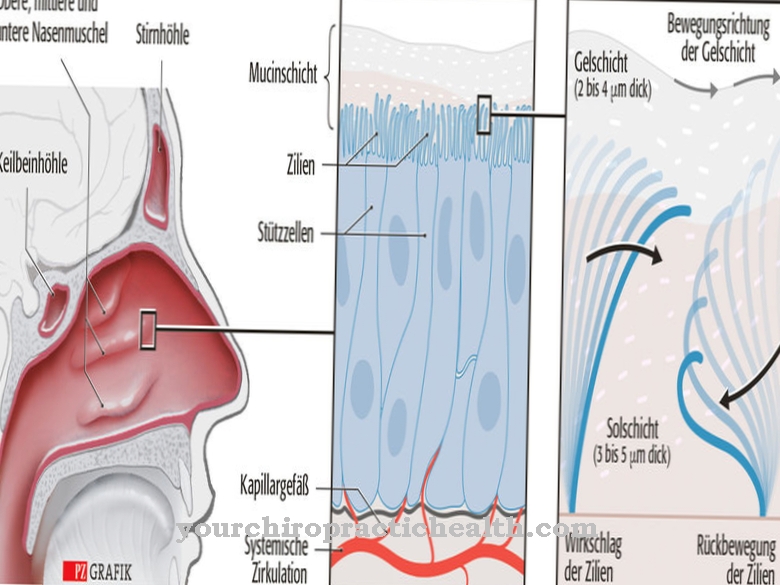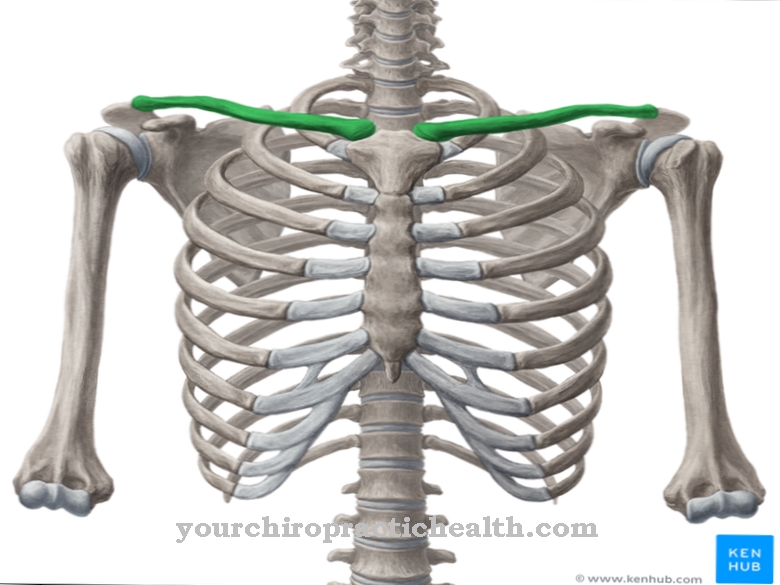The auricle is the individually shaped outer part of the ear in every person. It has both functionally important and functionless parts (e.g. earlobes). Diseases of the auricles are often the result of mechanical influences, injuries, piercings, insect bites or operations.
What is an auricle?
The auricle indicates the externally visible part of the ear. Its Latin name is Auricula auris. It consists largely of cartilage tissue covered with skin. Their task is to pick up sound, which is concentrated towards the inner ear by the funnel effect.The elastic cartilage shapes the shape of the auricle, which grows together with the skull and is covered by a layer of tissue (periosteum). The sensations in the auricula auris are controlled by four different nerves. The functionless earlobe is largely insensitive to pain and is therefore often used to take blood for laboratory tests.
Like the ear muscles and the Darwin ear cusp, the earlobe no longer has any function. The entire morphology of the auricle is genetically determined and therefore has specific characteristics for each person.
Anatomy & structure
Everyone has individually shaped auricles made of cartilage tissue covered with skin. Their main feature is the striking relief with folds and depressions. The outer edge of the auricle is called the helix. The helix runs parallel to the sickle-shaped anthelix. Both are separated by the scapha, a sickle-shaped indentation. This relief acts as an important filter system for the incident sound.
The relief edges cause the refraction and, depending on its frequency, also the different attenuation of the sound. The shape and size of the auricles also determine the overall visual impression of the face, which is not physiological, but in many cases has a psychological meaning. While most animals can move their ears in the direction of the sound sources, their mobility is greatly reduced in humans.
The ear muscles responsible for this have lost all meaning in humans and are only a rudiment. The fleshy skin lobes (ear lobes) in the lower part of the auricula auris have also become functionless. However, every person has individually designed earlobes. Overall, the human auricle is just as unique as a fingerprint and can be used for identification purposes in criminology.
Function & tasks
As already mentioned, the relief system of the auricles ensures the filtering of the incoming sound. The brain gains information about its spatial origin through the refraction and frequency-dependent attenuation of the sound waves. The elevations and depressions within the auricles give the sound its own timbre depending on its origin.
Based on this timbre, the brain can determine whether the sound is coming from the front, from the back, from below or from above. The determination of whether the sound source is on the right or left is mediated by other mechanisms. To do this, the brain analyzes, among other things, the difference in travel time of the sound. Another possibility is to assess the volume, whereby the sound source facing the ear is usually the loudest. In the animal kingdom there is often the possibility of actively aligning the ears with the corresponding sound source.
This is conveyed through the ear muscles. This ability largely no longer exists in humans. Some people can wiggle their ears in a rudimentary way, but this no longer has any physiological significance. Therefore, the auricles are sometimes mistakenly viewed as superfluous organs. However, this is by no means the case, since directional hearing would not be possible without the function of the forward-facing auricles.
You can find your medication here
➔ Medicines for earache and inflammationIllnesses & ailments
Diseases of the auricles are often triggered by external stimuli. Injuries, piercings, insect bites, frostbite or even operations sometimes lead to an othematoma. The othematoma is a bloody-serous effusion between the cartilage of the auricle and the overlying connective tissue (Perichondrium). Sometimes it is enough to lie on a folded auricle.
Often, violence also plays a role. The othematoma manifests itself as a reddish swelling on the front of the auricula auris. Usually there is no pain. However, the connective tissue can reorganize as a result of the effusion, which sometimes leads to a significant change in the auricle. If the othematoma is not treated, auricular perichondritis can develop. Inflammatory reactions occur within the auricle due to infection with Pseudomonas aeruginosa or, more rarely, with Staphylococcus aureus.
These infections are to be taken very seriously because they can completely destroy the cartilage tissue. The disease is accompanied by severe pain and abscess formation. The earlobe can be reddened, but is not subject to the painful inflammatory processes.The auricle perichondritis is treated with alcohol compresses and antibiotics. Often the auricles also develop what is known as chondrodermatitis nodularis helicis.
This condition is characterized by the formation of nodules on the helix or the antihelix. These nodules are very painful and quickly enlarge to 5-8 mm in diameter. After that, they remain stable. The causes of this condition are unknown. In addition to these acquired diseases, there are also congenital malformations of the auricles. These malformations manifest themselves as ear cysts, ear pendants, ear fistulas or auricular dysplasias.
Ear cysts represent cavities in the area of the ear. Ear tags are flap-like protrusions of the skin on the ear. Auricular dysplasias describe structural changes in the auricles which, depending on their severity, can have purely cosmetic to functional effects.

